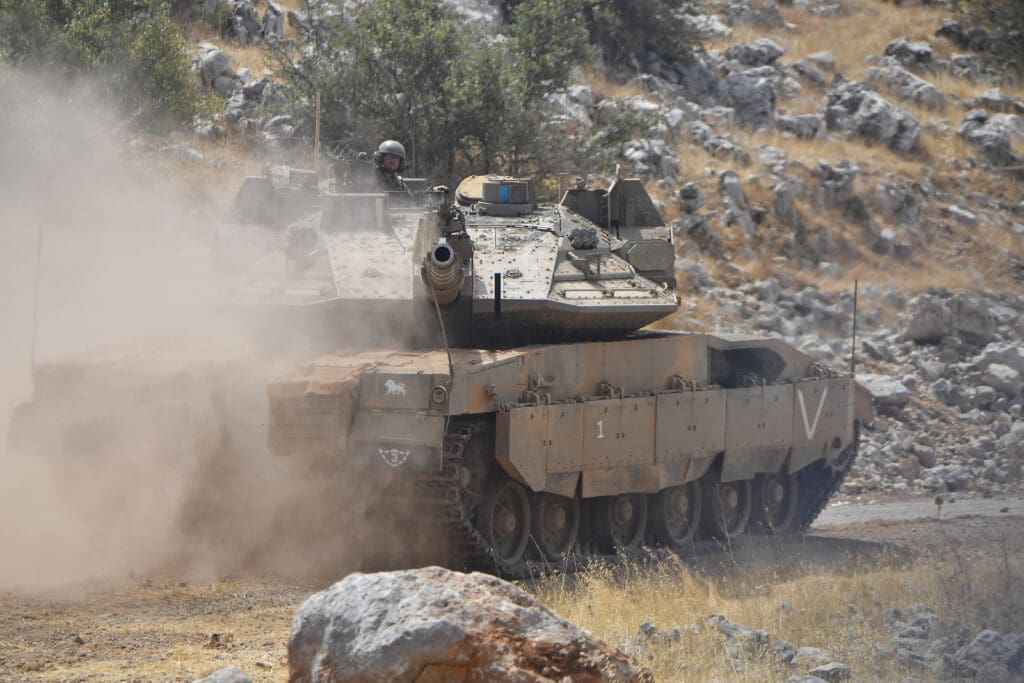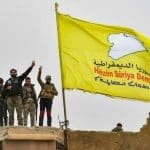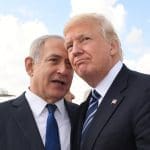The opening of a front by Hezbollah from southern Lebanon, aimed at pressuring Israel to halt its actions in Gaza, is a central consideration in the possible regionalization of the conflict. This situation also poses a significant challenge to Israel’s long-standing security doctrine. The security doctrine, established in the 1950s by David Ben-Gurion, the founding leader of the Zionist state, asserts that due to Israel’s lack of strategic depth wars should be waged on enemy territory. The doctrine is based on the vulnerability of Israel’s civil, military and strategic infrastructure and facilities to enemy attacks. As former Chief of Staff Gadi Eisenkot wrote in 1997 in an article titled “Israel Security in the 21st Century: Risks and Opportunities,” Israel gained strategic depth when it seized the Golan Heights from Syria, the Sinai Peninsula from Egypt, and the West Bank from Jordan in the 1967 Six-Day War.
SECURITY DOCTRINE DEFINED BY A LACK OF STRATEGIC DEPTH
With the Camp David Accords in 1979, Israel relinquished the Sinai Peninsula in exchange for peace with Egypt. However, Israel did not withdraw from the West Bank and East Jerusalem, which are central to its expansionist strategy, despite signing the Wadi Araba Treaty with Jordan in 1994. Israel’s 2005 withdrawal from the Gaza Strip was based on the 1993 Oslo Accords with Palestine Liberation Organization (PLO) leader, Yasser Arafat.
Eisenkot’s warning that ‘Israel risks losing strategic depth in its search for peace’ was related to the partial cession of the West Bank to the Palestinians under the Oslo Accords. Of course, instead of withdrawing, Israel expanded illegal settlements in the West Bank and East Jerusalem, making the creation of a Palestinian state virtually impossible. Israel has annexed the territories it captured in Syria and Lebanon, where it is technically still at war. Although partial retreat from strategic depth in exchange for peace has led to some gaps in doctrine, Israel still upholds the principle that war must be fought strictly beyond its borders. Israel’s lack of strategic depth necessitates not only robust defense systems such as the ‘Iron Dome’ but also a strong, fast, and short-term offensive capability. This capacity also provides deterrence.
OPENING GAPS IN STRATEGIC DEPTH
The October 7 Al-Aqsa Flood was a game-changing event, marking the shift of the conflict into Israeli territory. However, Hezbollah’s offensive from southern Lebanon into northern Israel, including the occupied territories, significantly disrupted the situation. On the northern front, Hezbollah presents a picture that lead figures like Yaakov Katz, former Editor-in-Chief of The Jerusalem Post, to say that “If the war enters Israeli territory, it will not only be a defeat but an existential risk.”
When Israel withdrew from the occupied Lebanese territories in 2000, it retained the Shabaa Farms, the Kfar Shuba Heights, and the village of Ghajar adjacent to the Golan. These territories serve as both a source of water and a base for surveillance and strikes in the Beqaa Valley. The Taif Agreement, which ended the Lebanese Civil War in 1990, stipulated the disarmament of all factions. However, Hezbollah was excluded from this requirement because some of its territories were still occupied. The agreement recognized Hezbollah’s weapons as essential for resistance against the occupation and, therefore, exempted them from disarmament.
“The truth is that Israel has relinquished territory to its enemy,” Yaakov Katz concludes from the picture created by the departure of settlers from the north after October 8. He hints at a reversal of strategic depth: “Although Israel established a 24 kilometer-wide security zone in southern Lebanon after the First Lebanon War, today this zone remains inside Israel.” Resolution 1701, which was adopted by the United Nations (UN) Security Council to end the 2006 war, also called for Hezbollah to withdraw north of the Litani River. Currently, the US is exerting pressure on Hezbollah by using this resolution.
HEZBOLLAH IS NO LONGER THE OLD ONE
Israel is considering reoccupying Lebanon, as she did in 1978, 1982, and 2006, in order to regain “strategic depth,” “rebuild its deterrence” and “resettle the north.” Israel’s 33-day withdrawal in 2006 was considered a defeat against Hezbollah. Hezbollah, which was believed to have 15,000 missiles and 40,000 fighters in 2006, is now estimated to have expanded its arsenal 10 times. With Kornet missiles, which are a nightmare for Israeli Merkava tanks, Russian-made Katyusha rockets, different types of drones, as well as the Fateh-110, Badr 313, Zelzal-1, Zelzal-2 missiles, and anti-ship Yakhonts, Hezbollah has expanded its stockpile of weapons. In 2013, Hezbollah became involved in the Syrian conflict and has since enhanced the field experience and weapon skills of its fighters. Many observers now believe that Hezbollah has become an organization capable of asserting its own rules of engagement and exercising deterrence. Comparisons with Hamas in this regard may be misleading.
Hezbollah has launched numerous attacks on the occupied Golan, Shebaa, and Kfar Shuba, as well as on major bases in northern Israel. They have targeted and disabled radars, radio towers, camera systems, and watchtowers, and have found ways to bypass the Iron Dome defense system. This weakening of Israeli defenses has heightened concerns about Hezbollah’s ability to infiltrate fighters, posing a greater threat to Israel than the Al-Aqsa Flood.
TACTICS TO CONTAIN HEZBOLLAH
The main issue troubling the US is how to close the opening in the front created by Hezbollah in the north. When President Joe Biden announced the ceasefire plan for Gaza on May 31, he mentioned Lebanon for the first time and emphasized the goal of restoring calm in northern Israel.
The Biden administration, which the main weapons supplier of the genocidal war, has been employing various means of pressure to stop or limit Hezbollah for months. The US quickly realized that a ceasefire in Gaza was necessary to halt Hezbollah and urged the parties to abide by the rules of engagement established since the 2006 Lebanon War. More importantly, crucial negotiations are underway for a negotiated resolution of the northern front once a ceasefire is achieved in Gaza. This is precisely why the ambassador at large, Amos Hochstein, has been engaging in shuttle diplomacy for months.
In the second phase, the main priority is to return to the UN-controlled Blue Line regime, which involves the withdrawal of Hezbollah north of the Litani River. All parties acknowledge that without this, the Israeli settlers cannot return to the areas they left. In fact, a study conducted by the Tel-Hai Academic College in May found that 38% of the settlers who left the area do not intend to return even if the fighting ends.
It was reported from Lebanese sources that Hezbollah has been responding to US messages from the beginning in the following manner: “First, stop Israel and end the war in Gaza; then we will discuss the northern front and the Blue Line.”
The pressure mechanisms developed by the US and its Western allies, such as France, are accompanied by the Gulf states as well. In addition to exerting pressure on Lebanon’s Prime Minister Najib Mikati, Parliament Speaker Nabih Berri, and Chief of Staff Joseph Aoun, there is a continuous effort to exploit Lebanon’s internal conflicts to weaken Hezbollah, as the parliament has been unable to elect a president.
Lebanese political factions aligned with the Western and Gulf countries have repeatedly cautioned Hezbollah not to set Lebanon on fire. Emphasizing that the normalization of the borders depended on a ceasefire in Gaza, Mikati, in contrast to then Prime Minister Fouad Siniora during the 2006 war, relatively resisted the oppression-conspiracy camp. Chief of Staff Aoun has also cautioned against provocations that could spark an internal conflict in Lebanon.
The political and economic conditions in Lebanon are more than ripe for instability and potential conflict. Parties such as the Lebanese Forces and the Kata’ib, which collaborated with Israel during the occupation years, are also at risk of causing further tension. Under the leadership of Maronite Patriarch Bishara al-Rai, some Christian parties, have been collaborating on a joint vision document aimed at addressing Hezbollah. Yet many of them were grateful to Hezbollah, saying that if Hezbollah had not stopped the jihadists in Syria, Lebanon would have fallen in 2013. Ongoing deadlock since 2022 in the presidential election in Lebanon has also contributed to this as well.
Nevertheless, since October, the pressure has not forced Hezbollah to stray from its strategic equation. The scale of the devastation and horror in Gaza has also resulted in a relative silence regarding Hezbollah’s role. There has been an influx of messages from various sources indicating that “the United States is struggling to persuade Israel not to declare war on Lebanon.” It has been suggested that “a ceasefire in Gaza may not necessarily extend to Lebanon” and that “Israel is planning to cause significant harm to Lebanon.” The UK has reportedly delivered a prominent warning that “Israel is intending to attack Lebanon in mid-June,” as per the Al-Akhbar newspaper.
Druze leader Walid Jumblatt returned from his visit to Doha with a whispered message. Qatari officials who mediated a ceasefire in Gaza shared the impression that “Israel is willing to engage in a deterrent conflict against Hezbollah.” In other words, jumblatt became one of the channels for relaying this message.
The possibility of Israel launching a significant offensive that could cripple Lebanon’s infrastructure is causing foreign countries to consider evacuations. Some Gulf countries have reached out to Syrian government to discuss the potential evacuation of their citizens from Damascus airport if Rafik Hariri International Airport is closed.
NEW EQUATION: IF YOU BURN, YOU WILL BE BURNT; IF YOU HIT, YOU WILL BE HIT
The new change in Hezbollah’s strategy, expanding its attack range in a controlled manner, indicates preparations for various scenarios after Gaza and includes calculations related to Lebanon.
The conflict initially spanned three to five kilometers, expanding to 10-15 kilometers, and also shifted to targeting settlements instead of just military targets. Each time Israel expanded the range of its attacks, Hezbollah responded in kind. The buffer zone in the north of Israel, which Israel aims to establish inside Lebanon, may allow Hezbollah to negotiate not only the Litani line but also the status of the occupied territories.
Rockets and mortars launched by Hezbollah in the Lower and Upper Galilee in retaliation for the attacks caused fires in various areas, particularly Kiryat Shmona, escalating pressure on Tel Aviv. Israeli threats of invasion have become more publicized.
Prime Minister Benjamin Netanyahu stated, “We are prepared for a very strong action,” while Chief of General Staff Herzi Halevi mentioned, “We are reaching a point where a decision must be made, and the army is ready to attack.” From Kiryat Shmona, National Security Minister Itamar Ben-Gvir threatened, “We must burn and destroy all Hezbollah strongholds. War!” Finance Minister Bezalel Smotrich suggested that the army should occupy Lebanon and create a buffer zone by pushing away hundreds of thousands of Lebanese from the border.
As of now, the American administration believes that the situation can be resolved through diplomatic means. US State Department spokesperson Matthew Miller stressed the importance of a diplomatic solution, stating, “We do not support a full war with Hezbollah.” According to Israeli state television KAN, the United States has intensified its efforts to persuade Israel not to escalate tensions with Hezbollah as the ceasefire in Gaza approaches. French President Emmanuel Macron also contacted Netanyahu with similar suggestions.
HOW WILL THE NORTHERN FRONT BE CLOSED: DIPLOMACY OR WAR?
Israel is not expected to launch an invasion in the north while continuing the war in Gaza. However, it may do so following the ceasefire in Gaza. This prospect does not frighten Hezbollah. “If Israel wants an all-out war, we are ready for it,” said Hezbollah Deputy Secretary-General Sheikh Naim Qassem in an interview with Al Jazeera. Qassem emphasized two points: first if Israel expands the war, it will face more destruction and displacement. Second, the resistance will not allow Israel to achieve any victory. According to Lebanese sources, Hezbollah has used only five percent of its ammunition in eight months. Surprises with the remaining long-range missiles create a deterrent in the war game. Let’s consider some possible scenarios of the consequences of a possible invasion:
- In case of a potential invasion of Lebanon, Hezbollah could disregard the current rules of engagement and target Israel’s strategic assets, including its nuclear power plants, airports, ports and petrochemical plants.
- The possibility of infiltration moves could potentially throw Israel into chaos. This extends far beyond just defending against threats by using the Iron Dome to intercept rockets and directing people to seek shelter. Israel might not be able to handle the fear of a retaliatory invasion or infiltration. In essence, a situation akin to the frequent fires in Lebanon could have a tenfold impact on Israel. In a scenario where both sides face consequences, the existential threat that Israel often discusses may no longer be just hypothetical.
- Iran is likely to take greater risks in order to prevent the collapse of Hezbollah. After the death of President Ibrahim Reisi in a helicopter crash, it was reported that the message conveyed to the Americans through Oman was “There will be no change in policy in the region, and if Israel does not stop the war, resistance will increase.” Acting Foreign Minister Ali Bagheri Kani also conveyed similar messages during his initial visits to Beirut and Damascus. “If the Zionist entity has any sense, it will not expand its front because it does not have the means to advance in Lebanon,” Kani said.
- Concurrently with the activities in Gaza, it is possible that Ansarullah in Yemen, the Iraqi Islamic Resistance in Iraq, and the Shiite militias in Syria will develop more lethal strategies for Hezbollah. Eventually, Hezbollah serves as a model for all resistance forces in the region.
- The Syrian leadership has maintained a cautious and composed attitude during the Gaza war. Lebanon is as strategically important for Syria as the occupied Golan Heights. The collapse of the “axis of resistance” in Lebanon could revitalize calculations regarding the collapse of Syria. Therefore, Damascus may not remain indifferent to the Lebanese war. Damascus might lift some of the restrictions it has imposed on Iranian-backed groups, potentially including the opening of a front in the Golan. Syrian leader Bashar al-Assad drew a line during his meeting with Kani, stating that “Any resistance to the occupation will remain a fundamental principle and a strategic choice.”
- The Gulf countries, led by Saudi Arabia, have historically been the primary financiers of anti-Hezbollah groups in Lebanon. After the invasion of Iraq in 2003, when the eyes turned to Syria and Lebanon as next targets, the Saudi-American partnership was funding Sunni militancy along the Tripoli-Akkar line.
Saudi Arabia, which refrained from joining the Anglo-American coalition against the Houthis who attacked Israeli ships in solidarity with Gaza, could give tacit support to an operation to end Hezbollah at the cost of making Lebanon a living hell. It is possible to see Egypt and Jordan in the Red Sea basin in support of the same line of action. Many actors do calculations on the idea that Hezbollah’s weapons will lose their legitimacy.
Unless they manage to destabilize Lebanon from within through civil war conspiracies, it seems like there is no chance of success for Israel in a new occupation campaign. The war in Lebanon may also confront the United States with an equation it finds very difficult to manage. So, the United States could focus on reaching a negotiated settlement in line with Resolution 1701. It is hard to believe that the lessons from the 1982 explosions, where Americans lost 241 soldiers and the French lost 58, have been forgotten. Since then, the balance of power has shifted enough to establish deterrence.







